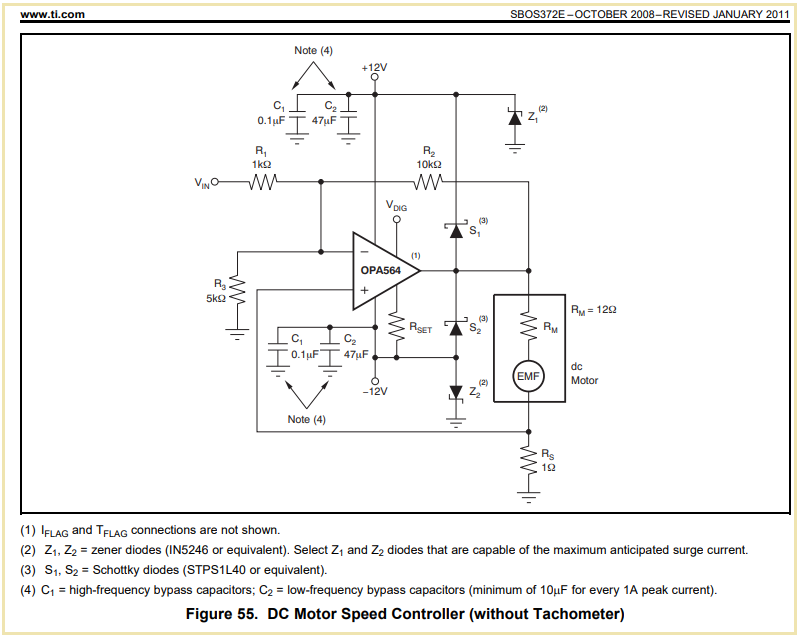Hi,
In the datasheet of the OPA564, Fig. 55, there are two Schottky diodes. I understand the goal of S1 : when a back-EMF increases the voltage on the output of the amplifier, S1 becomes forward and the current can flow towards the power supply.
But I really don't understand the goal of S2 : when the voltage on the output of the amplifier decreases and goes below -Vpower, S2 becomes forward, but in this case, where does the current go?
I tried to simulata it but it must be bad because the voltage on the ouput of the amplifier is the one of the simulate emf.
Thank you


